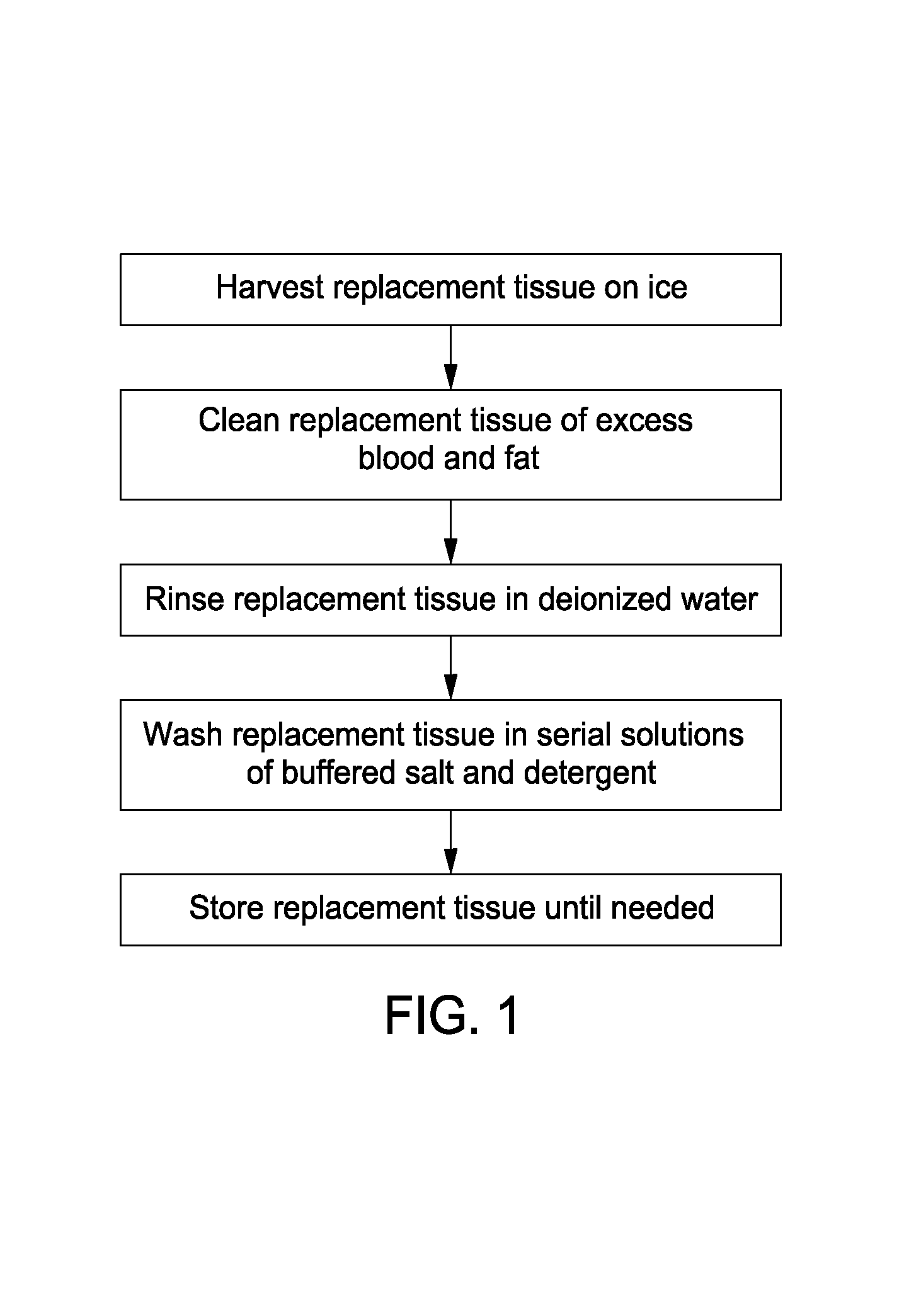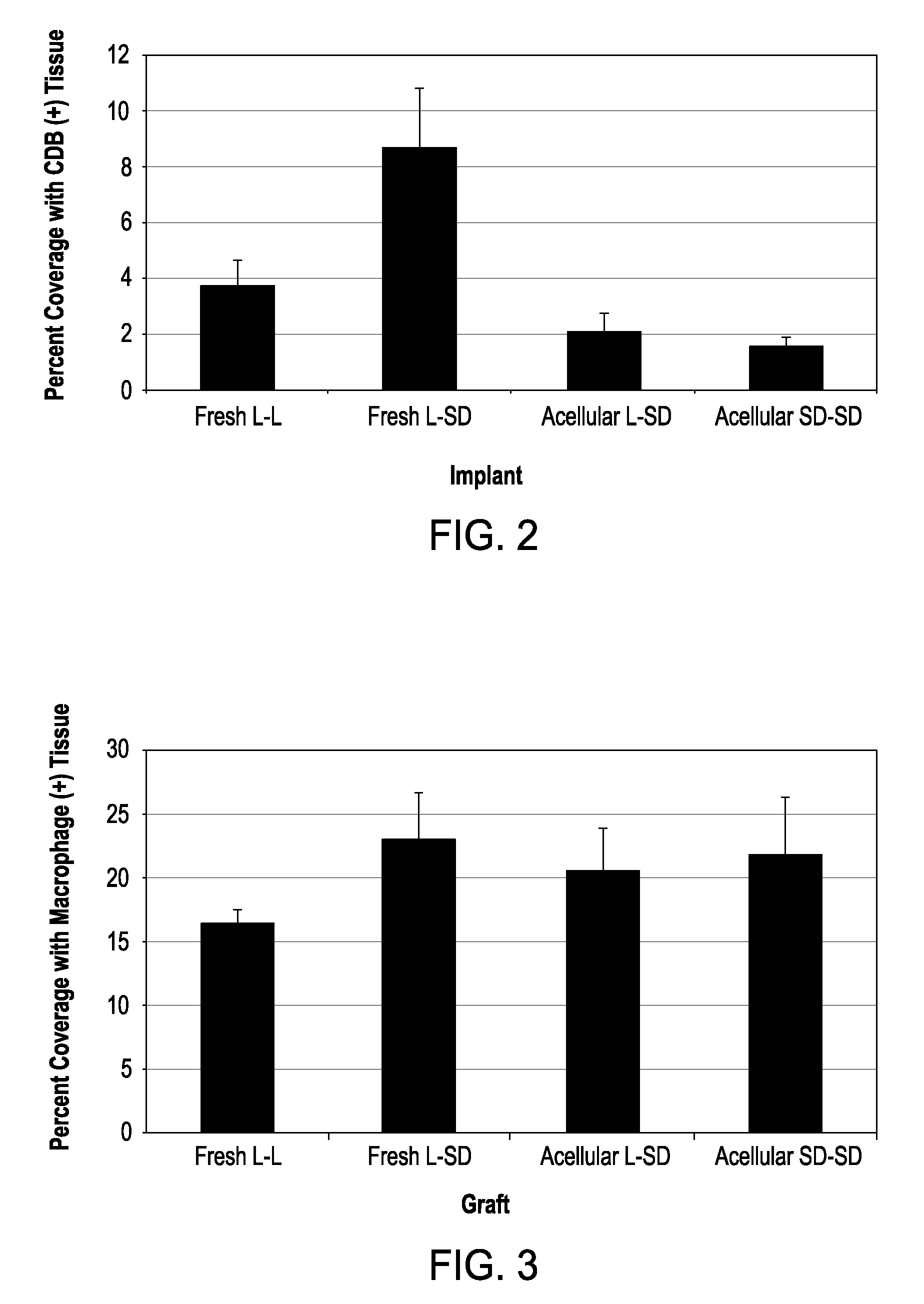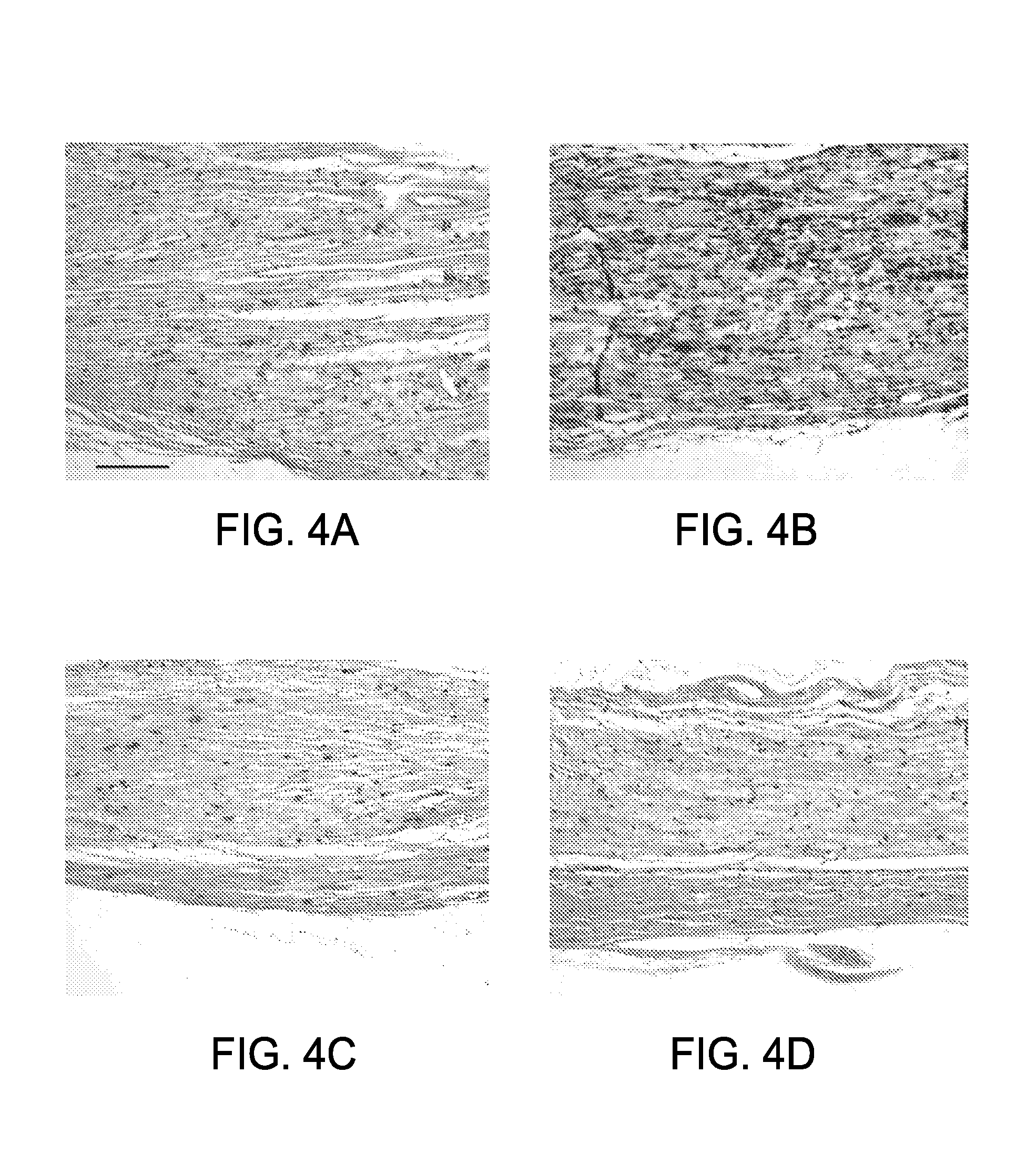Cell-free tissue replacement for tissue engineering
a cell-free, tissue technology, applied in the field of tissue engineering, can solve the problems of biocompatible structures, difficult to overcome mechanical and structural differences that define the function of different types of tissue, and inability to flexibly compromise in areas requiring flexibility, etc., to prevent the infiltration of occluding connective tissue, less remodeling, and loss of function
- Summary
- Abstract
- Description
- Claims
- Application Information
AI Technical Summary
Benefits of technology
Problems solved by technology
Method used
Image
Examples
example 1
[0052]Preparation of Native Cell-free Tissue. Solutions used for the preparation of native, acellular nerve tissue include, e.g., RPMI medium, double distilled water (ddH2O), 100 mM Na / 50 mM phosphate buffered solution, 50 mM Na / 10 mM phosphate buffered solution, SB-10 (5×CMC) in 50 mM Na / 10 mM phosphate buffered buffer solution, an anionic surface-active detergent (such as Triton X-200 / SB-16 [0.07% / 5×CMC] in 50 mM Na / 10 mM phosphate buffered solution). All solutions were either filter sterilized or autoclaved as appropriate for the preparation of samples to be used in a sterile field; techniques of which are readily apparent to those of skill in the art. Examples of anionic surface-active detergents that may be used and adapted with the method of the present invention include, e.g., TRITON X-200, TRITON W-30 Conc., TRITON GR-5M, TRITON GR-7M, TRITON DF-20, and TRITON QS-44.
[0053]In advance of retrieving the tissue, sterile RPMI medium is added to, e.g., a 15 mL conical tube and kep...
example 2
[0071]Replacement Nerve Tissue Graft. A replacement is needed for the autologous graft, the primary clinical treatment of peripheral nerve injuries that involve a defect too large to be repaired by end-to-end reconnection. As described hereinabove, the present inventors have developed an optimized acellular nerve allograft that retains the extracellular structure of peripheral nerve tissue via an improved chemical decellularization treatment. The decellularization process removes cellular membranes from nerve tissue, thus eliminating the antigens responsible for allograft rejection.
[0072]In this example, the optimized acellular grafts were tested in vivo for their immunogenicity and regenerative capacity using a well-established rat model system for immunological response of nerve tissue transplants. To test the immunogenicity of the acellular grafts, nerve tissue from Harlan Sprague-Dawley rats was decellularized and implanted into Lewis rats for 28 days. Histological examination o...
PUM
| Property | Measurement | Unit |
|---|---|---|
| temperature | aaaaa | aaaaa |
| temperature | aaaaa | aaaaa |
| temperature | aaaaa | aaaaa |
Abstract
Description
Claims
Application Information
 Login to View More
Login to View More - R&D
- Intellectual Property
- Life Sciences
- Materials
- Tech Scout
- Unparalleled Data Quality
- Higher Quality Content
- 60% Fewer Hallucinations
Browse by: Latest US Patents, China's latest patents, Technical Efficacy Thesaurus, Application Domain, Technology Topic, Popular Technical Reports.
© 2025 PatSnap. All rights reserved.Legal|Privacy policy|Modern Slavery Act Transparency Statement|Sitemap|About US| Contact US: help@patsnap.com



